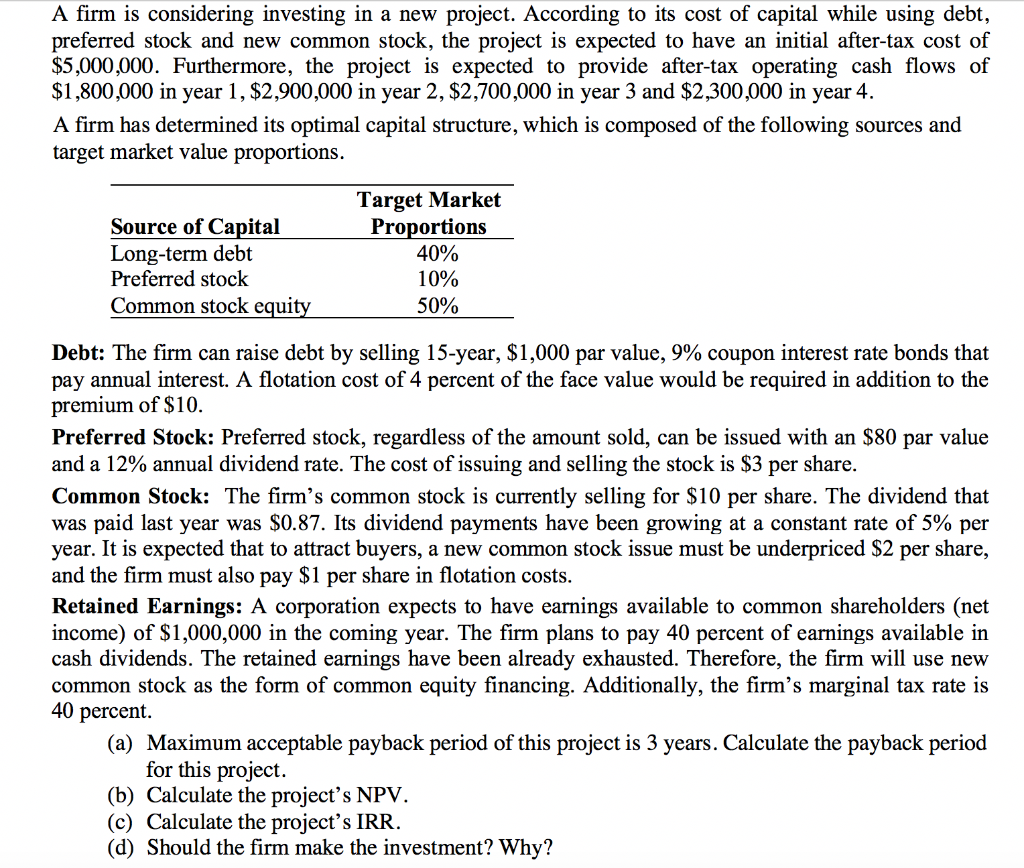Answered step by step
Verified Expert Solution
Question
1 Approved Answer
A firm is considering investing in a new project. According to its cost of capital while using debt, preferred stock and new common stock, the

A firm is considering investing in a new project. According to its cost of capital while using debt, preferred stock and new common stock, the project is expected to have an initial after-tax cost of $5,000,000. Furthermore, the project is expected to provide after-tax operating cash flows of $1,800,000 in year 1, $2,900,000 in year 2, $2,700,000 in year 3 and $2,300,000 in year 4. A firm has determined its optimal capital structure, which is composed of the following sources and target market value proportions. Source of Capital Long-term debt Preferred stock Common stock equity Target Market Proportions 40% 10% 50% Debt: The firm can raise debt by selling 15-year, $1,000 par value, 9% coupon interest rate bonds that pay annual interest. A flotation cost of 4 percent of the face value would be required in addition to the premium of $10. Preferred Stock: Preferred stock, regardless of the amount sold, can be issued with an $80 par value and a 12% annual dividend rate. The cost of issuing and selling the stock is $3 per share. Common Stock: The firm's common stock is currently selling for $10 per share. The dividend that was paid last year was $0.87. Its dividend payments have been growing at a constant rate of 5% per year. It is expected that to attract buyers, a new common stock issue must be underpriced $2 per share, and the firm must also pay $1 per share in flotation costs. Retained Earnings: A corporation expects to have earnings available to common shareholders (net income) of $1,000,000 in the coming year. The firm plans to pay 40 percent of earnings available in cash dividends. The retained earnings have been already exhausted. Therefore, the firm will use new common stock as the form of common equity financing. Additionally, the firm's marginal tax rate is 40 percent. (a) Maximum acceptable payback period of this project is 3 years. Calculate the payback period for this project. (b) Calculate the project's NPV. (c) Calculate the project's IRR. (d) Should the firm make the investment? Why
Step by Step Solution
There are 3 Steps involved in it
Step: 1

Get Instant Access to Expert-Tailored Solutions
See step-by-step solutions with expert insights and AI powered tools for academic success
Step: 2

Step: 3

Ace Your Homework with AI
Get the answers you need in no time with our AI-driven, step-by-step assistance
Get Started


